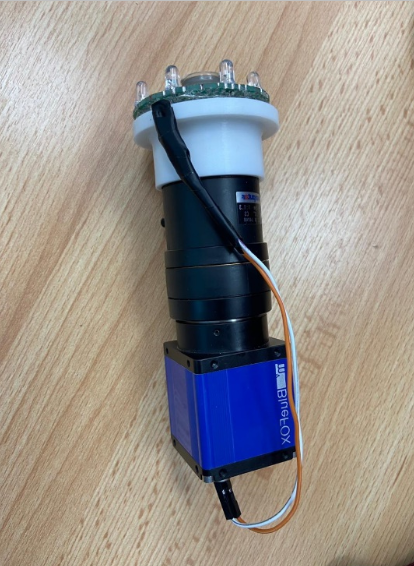
Portable Ophthalmoscope for Telemedicine Retinopathy of Prematurity (ROP) Screening in Egypt
Few diseases affect human life and personal destinies more than the loss of the ability to see. In adults, visual impairment is associated with a loss of personal independence inducing large personal and societal costs. According to the World Health Organization, 39 million people are legally blind. In Egypt, there are almost 1 million individuals (~1% of the population) with sight loss. The economic and personal cost for these individuals is high. Retinopathy of Prematurity (ROP) is a potentially blinding condition that occurs in premature babies. ROP is considered to be one of the targets of The Global Initiative for the Elimination of Avoidable Blindness and is identified as an important cause of blindness in both high and middle-income countries by the World Health Organization’s “Vision 2020 program”. Its incidence is increasing worldwide as the standard of care and survivability of neonates improves. The estimated ROP prevalence in developed countries is 5–8% and to up to 30% in middle-income developing countries with less adequate neonatological facilities. In established economies, screening allows for prescribing a collection of treatments that can prove effective in 50-80% of cases. However, if left untreated, 43% of affected infants will be rendered blind, with devastating consequences.
The Standard ROP screening is difficult, time-consuming, costly and stressful to both babies and physicians. In emerging economies such as Egypt, although ICU care is improving, there are further complications:
- Current medically approved post-natal imaging devices (RetCam) are very expensive (~E£ 2 M) and thus limited to a few high-cost centers.
- In addition to cost, the machines are bulky making it difficult to integrate into remote neonatal care for infants screening.
- Travel to centers of excellence can be a major burden for families during the post-natal period, given the loss of income.
The problem is therefore how to efficiently screen for ROP without putting undue cost burdens on parents with relatively low incomes. In tandem, mobile imaging and image processing technologies have improved radically whilst significantly dropping in price. As such our aims in this project are as follows:
-
Develop a low-cost screening device (~E£30000) which can be deployed in the field by trained nurses,
-
Test the developed device on model eye to evaluate the performance.
Objective/Contributions:
- Develop a low-cost retina screening device which can be deployed in the field by trained nurses
- Test the developed device on model eye to evaluate the performance.
Outcome: Publications
- Proposed to publish 1 Journal and 2 conferences
- Organizing NILES22 and MEDI22 conferences

